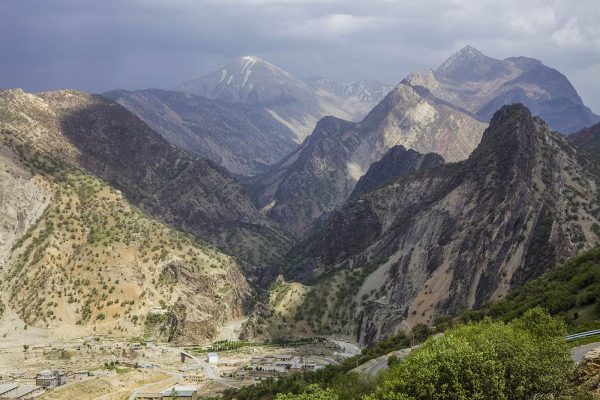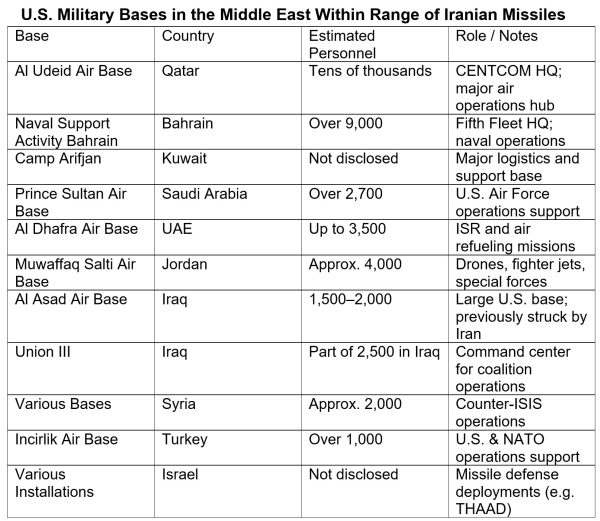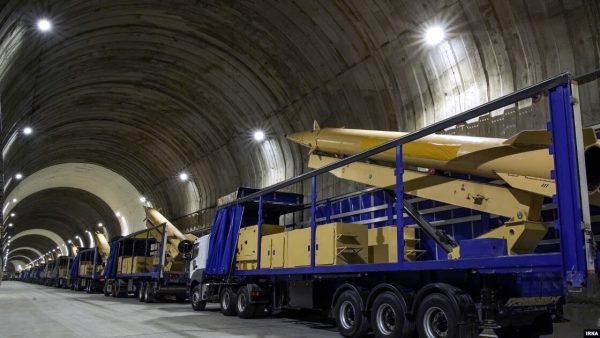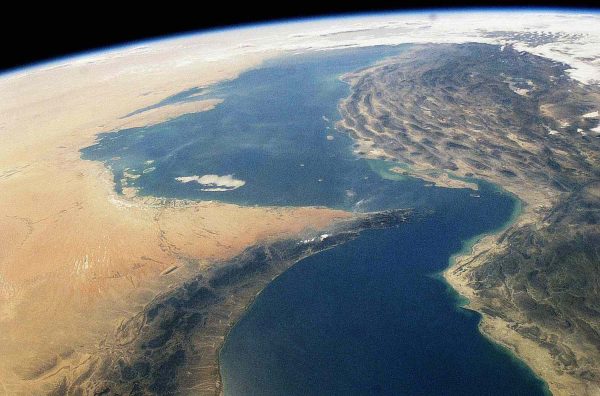The 9/11 attack on the U.S. triggered a series of disastrous wars in the Mideast in which the U.S. pursued the goals of overthrowing despots, securing oil supplies, and removing any real or potential military threats to Israel. The result was a large expenditure of blood and treasure for very little geopolitical gain and the destruction and/or destabilization of Afghanistan, Iraq, Libya, and Syria. Only Iran escaped this ruinous program of aggression in the Mideast. But Iran has remained in the crosshairs of Israel, which considers Iran the last regional power posing a threat. Israel continues its efforts to draw the U.S. into a war with Iran. I will explain why attacking Iran would be a foolish action harmful to the interests of the U.S.
Size Matters
Iran is a much bigger and more populous country than any nation the U.S. has attacked in the Mideast. To depose the regime and eliminate all Iranian military facilities, an invasion would be necessary. Because Iran is four times the size of Iraq (636,400 sq. mi. vs 169,200 sq. mi.) and three times more populous (88 million vs 25 million), a U.S. army of over half a million troops would be required for an attempt to conquer Iran, and this would likely require conscription to supply the necessary soldiers. U.S. Casualties in a ground war in Iran would probably be several multiples greater that those incurred in Iraq (approximately 3,400 KIA and 32,000 wounded in Iraq).
Not only is Iran a big country, it has a large mountainous region, the Zagros range, stretching over 900 miles along its western border. The steep terrain and narrow passes would pose substantial obstacles for any ground invasion force and would facilitate the same defensive tactics employed by the Taliban in similar terrain in Afghanistan.

Zagros Mountains – Welcome to Iran
Although an extended bombing campaign could destroy many of Iran’s military assets, it would be unlikely to secure a capitulation of the regime, and sufficient Iranian weaponry would remain to inflict serious damage on U.S. bases in the region. With an estimated arsenal of over 1,000 ballistic missiles capable of striking U.S. forces in the Mideast, Iran could inflict significant casualties on U.S. personnel, even if there were no ground invasion of Iran.

U.S. Mideast Bases – assets or targets?

Iranian missiles – an adequate deterrent?
The vulnerability of U.S. forces to Iranian attacks is a key reason why Israel may be able to draw the U.S. into a war with Iran. An Israeli strike against Iran would likely trigger retaliation against U.S. forces believed to have enabled the attack. Pro-war Israelis assume that once there are American casualties the U.S. would join in the campaign.
Economic Disruption
A full-scale regional war between the U.S. and Iran would involve the closure of the Straight of Hormuz and the destruction of oil production and export facilities in Iran, Saudi Arabia, and the Gulf States. Such a conflict could result in a doubling of oil prices, with severe impacts on the world economy. The longer the duration of the war, the more extensive would be the economic damage. The Houthis in Yemen, with far less military capability than Iran, have effectively cut off most shipping in the Red Sea for many months with periodic missile attacks. It is likely that Iran could accomplish a much greater disruption to trade than the Houthis.

Straight of Hormuz – energy choke point
Damage to Israel
Israel has made serious misjudgements of military situations in the past: the Suez Operation, the Yom Kippur War, and the October 7 Hamas attack all revealed failures of intelligence and miscalculations of risk. Launching a war against Iran exposes Israel to serious risks if its intelligence estimates are faulty. If Israel has underestimated the numbers and accuracy of Iran’s missile arsenal, or overestimated its ability to pre-emptively destroy the missiles, it will face devastating retaliatory attacks. If Israel has overestimated the capacity of its anti-missile defenses, it will suffer the loss of critical civilian infrastructure, such as power plants, desalinization facilities, fuel storage sites, and offshore gas production rigs. Even after recovering from such a calamity, a weakened Israel would still be surrounded by hostile neighbors further antagonized by yet another episode of terrible destruction.
Cultural Devastation
Apart from the grave military and economic dangers of war with Iran, there is the hazard of loss of irreplaceable cultural sites and artifacts. Iran is an ancient nation with a rich history spanning millenia. A large-scale war with Iran would risk the destruction, damage, and looting of many great monuments of Persian and Islamic civilization. The failure of invading U.S. forces to prevent widespread destruction and looting of cultural sites in Iraq indicates the magnitude of this danger.

Jameh Mosque in Isfahan – future collateral damage site?
Conclusion
Rational analysis is powerless against entrenched ideology, and the ideology of the U.S. neocons has thus far been impervious to negative outcomes. They view military and political failures as evidence of insufficient application of military force, which they consider the universal remedy for America’s international difficulties. If President Trump is swayed by the Israel lobby and the war hawks in his cabinet, he will add yet another blunder to the sad record of misguided U.S. military adventures in the Mideast and accelerate the decline of U.S. hegemony. Talleyrand said of the Bourbon monarchs “They have learned nothing and forgotten nothing.” Let us hope that these words will not be applicable to the U.S. as we approach the brink of war with Iran.






